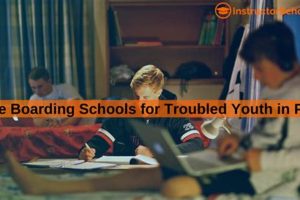
A school board is a group of elected or appointed officials who oversee the operation of public schools in a particular district. School boards are responsible for a wide range of issues, including setting educational policy, approving the school budget, and hiring and firing the superintendent. School boards can be either partisan or nonpartisan.
Partisan school boards are elected on a party ticket, and their members are typically aligned with a particular political party. This can lead to partisan disputes over educational policy, as members of different parties may have different priorities for the schools. For example, some partisan school boards may prioritize standardized testing and accountability, while others may prioritize equity and access.
Nonpartisan school boards are elected without party affiliation, and their members are typically chosen based on their experience and qualifications. This can help to reduce partisan disputes and ensure that the school board is focused on what is best for the students. For example, nonpartisan school boards may be more likely to focus on issues such as teacher quality, curriculum development, and school safety.
There are pros and cons to both partisan and nonpartisan school boards. Partisan school boards can be more responsive to the concerns of their constituents, but they can also be more divided and less effective at making decisions. Nonpartisan school boards can be more focused on what is best for the students, but they can also be less accountable to the public.
Ultimately, the decision of whether to have a partisan or nonpartisan school board is a local one. There is no right or wrong answer, and the best choice will vary depending on the specific circumstances of the community.
1. Elections
The way in which school board members are elected has a significant impact on the nature of the school board and the decisions that it makes. Partisan school boards are more likely to be divided along party lines, as members of different parties may have different priorities for the schools. This can lead to gridlock and conflict, making it difficult for the school board to make decisions. Nonpartisan school boards, on the other hand, are more likely to be focused on what is best for the students, as members are not beholden to a particular political party.
- Party politics: Partisan school boards are more likely to be influenced by party politics, as members may be beholden to the interests of their party rather than the needs of the students. This can lead to decisions that are based on political ideology rather than what is best for the schools.
- Local control: Nonpartisan school boards are more likely to be responsive to the needs of the local community, as members are not beholden to a particular political party. This can lead to decisions that are more in line with the values and priorities of the community.
- Accountability: Partisan school boards may be less accountable to the public, as members may be more concerned with pleasing their party than with representing the interests of the community. Nonpartisan school boards, on the other hand, are more likely to be accountable to the public, as members are not beholden to a particular political party.
Ultimately, the decision of whether to have a partisan or nonpartisan school board is a local one. There is no right or wrong answer, and the best choice will vary depending on the specific circumstances of the community.
2. Members
The composition of a school board has a significant impact on the way that it operates and the decisions that it makes. Partisan school boards are more likely to be divided along party lines, as members may have different priorities for the schools based on their political ideology. This can lead to gridlock and conflict, making it difficult for the school board to make decisions. Nonpartisan school boards, on the other hand, are more likely to be focused on what is best for the students, as members are not beholden to a particular political party.
- Political ideology: Partisan school board members are more likely to make decisions based on their political ideology, rather than what is best for the students. This can lead to decisions that are not in the best interests of the students or the community.
- Experience and qualifications: Nonpartisan school board members are more likely to be chosen based on their experience and qualifications, rather than their political affiliation. This can lead to decisions that are more informed and in line with the needs of the students and the community.
- Accountability: Partisan school board members may be less accountable to the public, as they may be more concerned with pleasing their party than with representing the interests of the community. Nonpartisan school board members, on the other hand, are more likely to be accountable to the public, as they are not beholden to a particular political party.
Ultimately, the decision of whether to have a partisan or nonpartisan school board is a local one. There is no right or wrong answer, and the best choice will vary depending on the specific circumstances of the community.
3. Decision-making
The way in which school board members are elected and the composition of the school board have a significant impact on the decision-making process. Partisan school boards are more likely to be divided along party lines, as members may have different priorities for the schools based on their political ideology. This can lead to gridlock and conflict, making it difficult for the school board to make decisions.
Nonpartisan school boards, on the other hand, are more likely to be focused on what is best for the students, as members are not beholden to a particular political party. This can lead to decisions that are more informed and in line with the needs of the students and the community.
For example, a partisan school board may be more likely to make decisions based on political ideology, such as supporting or opposing vouchers for private schools. A nonpartisan school board, on the other hand, may be more likely to make decisions based on what is best for the students, such as supporting programs that have been shown to improve student achievement.
Ultimately, the decision of whether to have a partisan or nonpartisan school board is a local one. There is no right or wrong answer, and the best choice will vary depending on the specific circumstances of the community.
4. Accountability
The question of accountability is a complex one when it comes to partisan vs nonpartisan school boards. On the one hand, partisan school boards may be more responsive to the concerns of their constituents, as they are elected on a party ticket and are therefore more likely to share the values and priorities of their constituents. On the other hand, nonpartisan school boards may be less accountable to the public, as they are not beholden to a particular political party and may therefore be more likely to make decisions that are not in the best interests of the community.
- Responsiveness to constituents: Partisan school boards are more likely to be responsive to the concerns of their constituents, as they are elected on a party ticket and are therefore more likely to share the values and priorities of their constituents. For example, a partisan school board in a conservative community may be more likely to support policies that promote traditional values, such as abstinence-only sex education and prayer in schools.
- Accountability to the public: Nonpartisan school boards may be less accountable to the public, as they are not beholden to a particular political party and may therefore be more likely to make decisions that are not in the best interests of the community. For example, a nonpartisan school board may be more likely to support policies that benefit the interests of a particular group or organization, such as a teachers’ union or a local business.
Ultimately, the question of whether partisan or nonpartisan school boards are more accountable to the public is a complex one. There is no easy answer, and the best solution may vary depending on the specific circumstances of the community.
5. Local control: The decision of whether to have a partisan or nonpartisan school board is a local one.
The principle of local control is a fundamental aspect of the American education system. It is the idea that decisions about education should be made at the local level, by the people who are most directly affected by those decisions. This principle is reflected in the way that school boards are elected and the powers that they are granted.
In most states, school board members are elected by the voters in their local district. This means that school boards are directly accountable to the people they represent. They must answer to their constituents on a regular basis and are subject to recall if they do not fulfill their duties.
The powers of school boards vary from state to state, but they typically include the authority to set educational policy, approve the school budget, and hire and fire the superintendent. This gives school boards a great deal of control over the education of their students.
The principle of local control is important because it ensures that schools are responsive to the needs of the communities they serve. School boards are able to tailor their policies and programs to meet the specific needs of their students and their community.
For example, a school board in a rural community may decide to focus on providing vocational education programs to prepare students for jobs in the local economy. A school board in a suburban community may decide to focus on providing advanced placement courses to prepare students for college.
Local control also allows communities to experiment with different educational approaches. For example, some communities have adopted charter schools, which are public schools that are operated by independent organizations. Charter schools are often given more flexibility to experiment with different teaching methods and curricula.
The principle of local control is not without its challenges. One challenge is that it can lead to disparities in educational quality between different communities. For example, some communities may have more resources to invest in their schools than others. This can lead to differences in teacher salaries, class sizes, and extracurricular activities.
Another challenge is that local control can sometimes lead to political interference in education. For example, some school boards have been accused of censoring textbooks or banning certain books from school libraries.
Despite these challenges, the principle of local control remains a cornerstone of the American education system. It ensures that schools are responsive to the needs of the communities they serve and that communities have the ability to experiment with different educational approaches.
6. Best choice: The best choice of partisan vs nonpartisan school board will vary depending on the specific circumstances of the community.
The choice of whether to have a partisan or nonpartisan school board is a complex one, and there is no easy answer. The best choice will vary depending on the specific circumstances of the community. Some factors to consider include the size of the community, the diversity of the population, and the level of political polarization.
- Size of the community: In small communities, it may be easier to have a nonpartisan school board, as there are fewer people to represent and less diversity of opinion. In large communities, it may be more difficult to have a nonpartisan school board, as there are more people to represent and more diversity of opinion.
- Diversity of the population: In communities with a diverse population, it may be more important to have a nonpartisan school board in order to ensure that all voices are heard. In communities with a more homogeneous population, it may be less important to have a nonpartisan school board.
- Level of political polarization: In communities with a high level of political polarization, it may be more difficult to have a nonpartisan school board, as people may be more likely to vote along party lines. In communities with a low level of political polarization, it may be easier to have a nonpartisan school board.
Ultimately, the decision of whether to have a partisan or nonpartisan school board is a local one. There is no right or wrong answer, and the best choice will vary depending on the specific circumstances of the community.
FAQs about Partisan vs Nonpartisan School Boards
School boards play a vital role in shaping the education system within their communities. Understanding the differences between partisan and nonpartisan school boards is crucial for informed decision-making regarding educational policies and the overall well-being of students.
Question 1: What is the primary distinction between partisan and nonpartisan school boards?
Answer: Partisan school boards are tied to political parties, with members typically aligned with a particular party’s platform. In contrast, nonpartisan school boards operate without political affiliations, focusing on the needs of the community and students.
Question 2: How does the election process differ between partisan and nonpartisan school boards?
Answer: Partisan school board candidates run on party tickets, while nonpartisan candidates run without party affiliation. In nonpartisan elections, individuals are often chosen based on their qualifications, experience, and commitment to education rather than political ideology.
Question 3: What are the potential advantages of having a partisan school board?
Answer: Proponents of partisan school boards argue that they can be more responsive to the concerns of their constituents, as they are directly tied to a particular political party’s platform. This can lead to a stronger alignment between the school board’s decisions and the values of the community they represent.
Question 4: What are the potential disadvantages of having a partisan school board?
Answer: Critics of partisan school boards argue that they can be more susceptible to political influences and gridlock, as members may prioritize party loyalty over the best interests of students. Partisan divisions within the board can hinder effective decision-making and compromise the board’s ability to address educational issues objectively.
Question 5: What are the potential advantages of having a nonpartisan school board?
Answer: Nonpartisan school boards are seen as less influenced by political agendas, allowing members to focus on the needs of students and the community as a whole. This can foster a more collaborative and less divisive environment, where decisions are based on consensus and a shared commitment to educational excellence.
Question 6: What are the potential disadvantages of having a nonpartisan school board?
Answer: Critics of nonpartisan school boards argue that they can be less accountable to the public, as they are not directly tied to a particular political party’s platform. This lack of party affiliation may make it more difficult for voters to hold board members accountable for their decisions.
Summary of Key Takeaways:
- The choice between partisan and nonpartisan school boards is influenced by factors such as community size, diversity, and political polarization.
- Partisan school boards may align more closely with constituent concerns but risk political divisions and gridlock.
- Nonpartisan school boards prioritize student needs and foster collaboration but may face challenges with accountability.
- Ultimately, the best choice depends on the specific circumstances and values of each community.
Transition to the Next Article Section:
As the debate surrounding partisan vs nonpartisan school boards continues, it is crucial for communities to engage in informed discussions and consider the potential implications of each model. By understanding the advantages and disadvantages of both approaches, citizens can make well-rounded decisions that ultimately benefit the education and well-being of their students.
Tips for Navigating Partisan vs Nonpartisan School Boards
Engaging with the topic of partisan vs nonpartisan school boards can be complex, but it is crucial for communities to have informed discussions about this topic. Here are a few tips to consider when discussing and making decisions about partisan vs nonpartisan school boards:
Tip 1: Understand the Differences:
Before engaging in discussions, it is essential to understand the fundamental differences between partisan and nonpartisan school boards. Partisan school boards are tied to political parties, while nonpartisan school boards operate without political affiliations. This distinction influences how members are elected and the potential dynamics within the board.
Tip 2: Consider the Pros and Cons:
Both partisan and nonpartisan school boards have potential advantages and disadvantages. Partisan school boards may be more responsive to constituent concerns but risk political divisions and gridlock. Nonpartisan school boards prioritize student needs and foster collaboration but may face challenges with accountability. Weighing these factors is essential when making informed decisions.
Tip 3: Evaluate Local Needs:
The choice between a partisan or nonpartisan school board should be based on the specific needs and circumstances of the community. Factors such as community size, diversity, and political polarization can influence the effectiveness of each model. It is essential to assess local needs and values to determine the best fit.
Tip 4: Encourage Civic Engagement:
Informed civic engagement is vital for making well-rounded decisions about school boards. Encourage community members to attend school board meetings, engage in discussions, and stay informed about educational issues. This active participation ensures that the perspectives and needs of the community are represented in the decision-making process.
Tip 5: Seek Common Ground:
Finding common ground is crucial when discussing partisan vs nonpartisan school boards. Despite differing opinions, it is essential to focus on shared goals, such as providing quality education for all students. Identifying areas of agreement can help facilitate constructive conversations and lead to decisions that benefit the entire community.
Summary of Key Takeaways:
- Understanding the differences between partisan and nonpartisan school boards is essential.
- Weighing the pros and cons of each model helps in making informed decisions.
- Local needs and circumstances should guide the choice between partisan and nonpartisan school boards.
- Encouraging civic engagement and seeking common ground foster constructive discussions.
Transition to the Article’s Conclusion:
Navigating the topic of partisan vs nonpartisan school boards requires careful consideration, informed discussions, and a commitment to finding solutions that prioritize the well-being and education of students. By following these tips, communities can engage in meaningful conversations and make well-rounded decisions that shape the future of their schools.
Conclusion
The debate between partisan and nonpartisan school boards raises important considerations for communities across the nation. Understanding the distinctions, weighing the advantages and disadvantages, and carefully evaluating local needs are crucial steps in making informed decisions about the structure of school governance.
While there is no universally superior model, each approach has its own implications. Partisan school boards may reflect constituent concerns more directly but risk political divisions and gridlock. Nonpartisan school boards prioritize student needs and collaborative decision-making but may face challenges with accountability. Communities must assess their unique circumstances and values to determine which model best aligns with their educational goals and priorities.
Ultimately, the choice between partisan and nonpartisan school boards is not merely a technical decision but a reflection of the community’s vision for its educational system. By engaging in informed discussions, seeking common ground, and prioritizing the well-being of students, communities can make well-rounded decisions that shape the future of their schools and the educational opportunities for generations to come.






